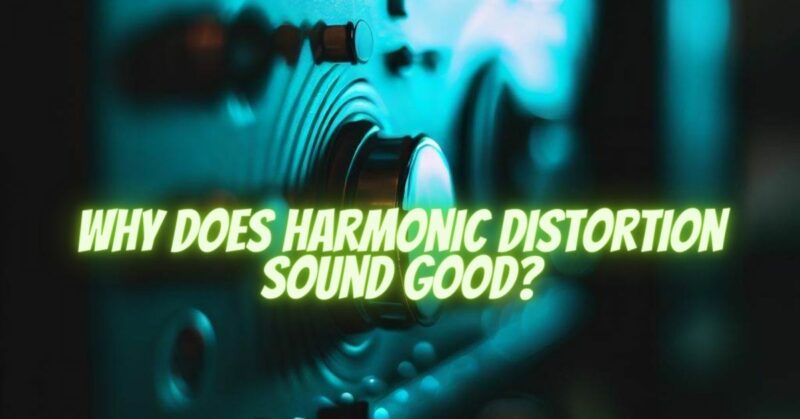When it comes to audio and music, distortion is often associated with unwanted noise or undesirable artifacts. However, there is one type of distortion that defies this notion and is widely celebrated for its pleasing and euphonic qualities: harmonic distortion. In this article, we will explore why harmonic distortion sounds so good, diving into the psychoacoustic and perceptual factors that contribute to its appeal and the impact it has on our perception of sound.
- Enriched Harmonic Content:
Harmonic distortion introduces additional harmonics to the original signal, creating a complex and layered sound. These harmonics are typically integer multiples of the original frequencies present in the signal. As a result, the sound becomes richer and more harmonically complex, evoking a sense of fullness and depth. The additional harmonics fill out the sound spectrum, adding texture and enhancing the overall timbre of the audio signal.
- Warmth and Depth:
Harmonic distortion, when applied judiciously, can impart a warm and inviting quality to the sound. This is especially evident in vacuum tube-based audio systems, where the nonlinear behavior of the tubes introduces harmonic distortion that is often perceived as pleasant and musical. The harmonics generated by the distortion process can add a sense of depth and character, creating a more engaging and immersive listening experience.
- Increased Perceived Loudness:
Harmonic distortion can contribute to the perception of increased loudness in audio signals. When certain harmonics are emphasized or boosted, they can create the illusion of a louder sound. This psychoacoustic effect can be desirable in certain musical contexts, as it gives the impression of a more powerful and impactful sound without actually increasing the volume. The perceived loudness resulting from harmonic distortion can add energy and excitement to the music.
- Enhanced Sustain and Note Bloom:
Instruments such as electric guitars benefit from harmonic distortion as it can enhance sustain and note bloom. When a signal is subjected to controlled distortion, the sustained notes acquire a singing quality and exhibit increased sustain. The harmonically rich nature of the distorted sound adds complexity and contributes to a more expressive and dynamic playing experience. This attribute of harmonic distortion has made it a staple effect in genres like rock and blues, where sustain and note articulation are highly valued.
- Psychoacoustic Pleasure:
Our perception of sound is influenced by psychoacoustic factors, including our subjective preferences and biases. Harmonic distortion has become ingrained in our musical culture, shaping our expectations and preferences. Over time, we have associated the warm, gritty, and harmonically complex qualities of harmonic distortion with the aesthetics of certain genres and styles of music. This familiarity and cultural conditioning contribute to the pleasure and emotional response we experience when listening to harmonically distorted sounds.
Conclusion:
Harmonic distortion is a sonic phenomenon that has captured the hearts of musicians and audiophiles alike. Its enriching of harmonic content, warmth, increased perceived loudness, sustain enhancement, and the psychoacoustic pleasure it brings contribute to its widespread appeal. Harmonic distortion adds a touch of complexity, character, and musicality to audio signals, allowing us to experience sound in a way that goes beyond its pure, pristine form. Embrace the beauty of harmonic distortion, and let its captivating qualities enhance your enjoyment of music and the sonic landscape.


